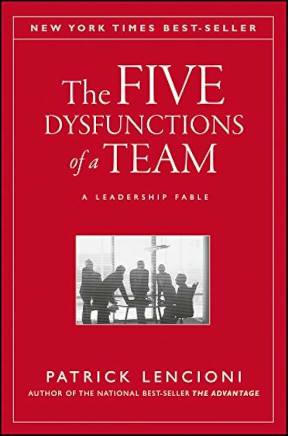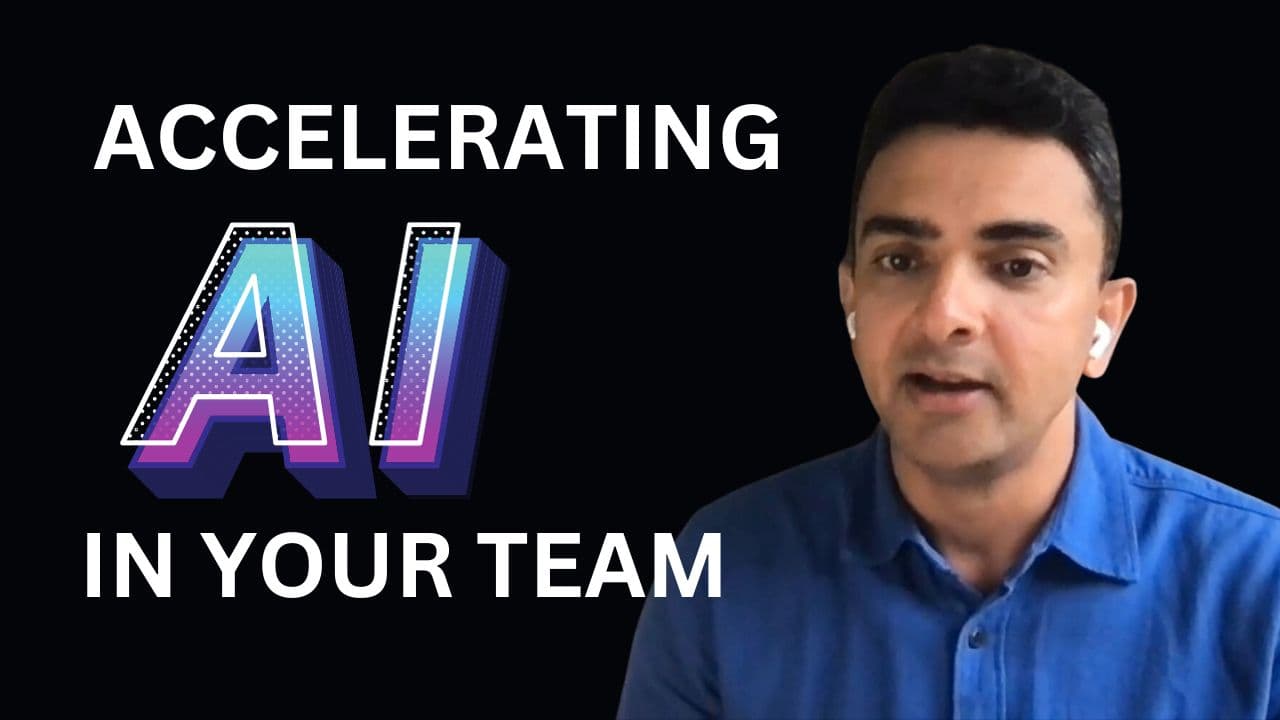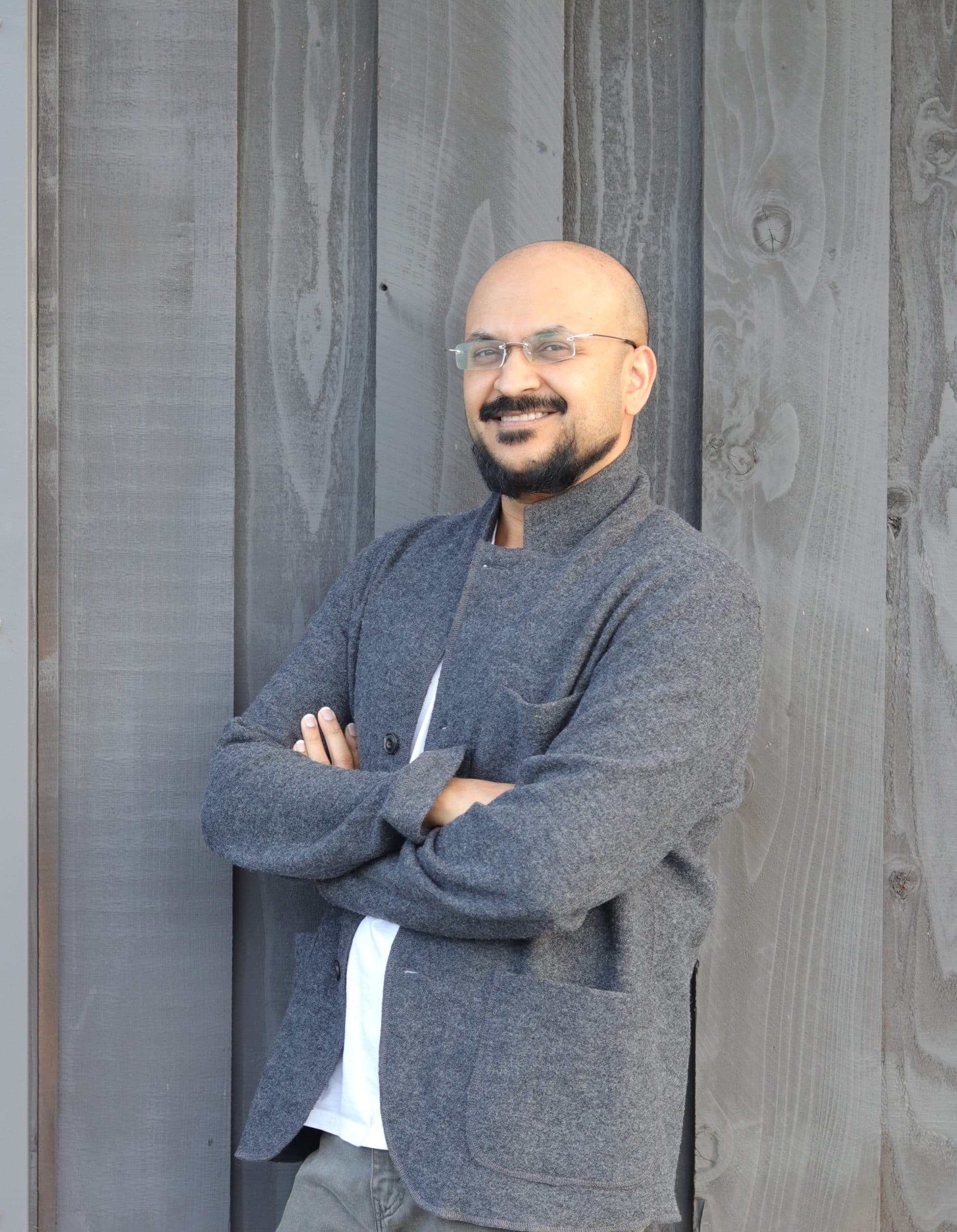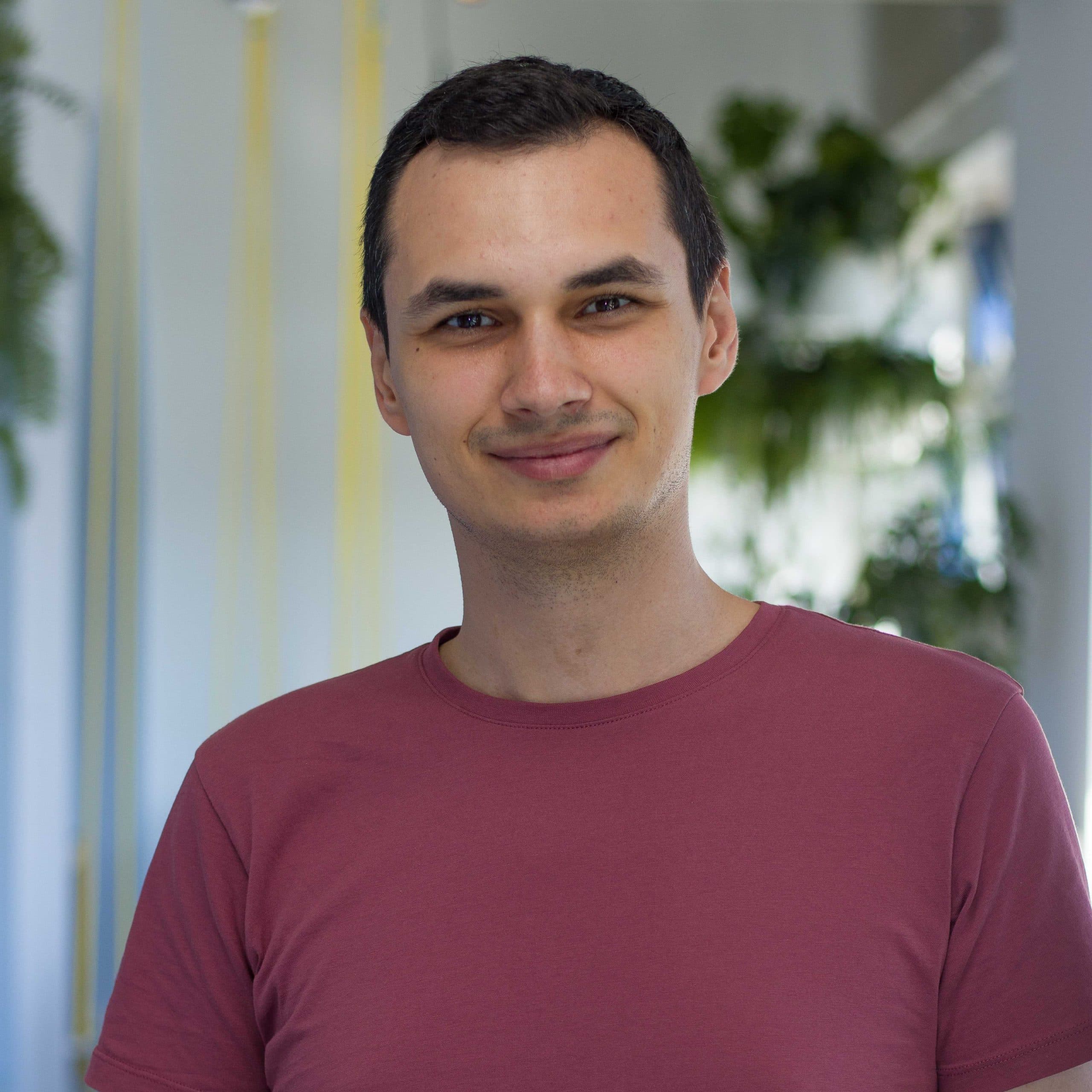Interview with Ashok Ramaraj, Senior Engineering Manager at Sam’s Club (Walmart)
Published on Jul 13, 2020
22 min read
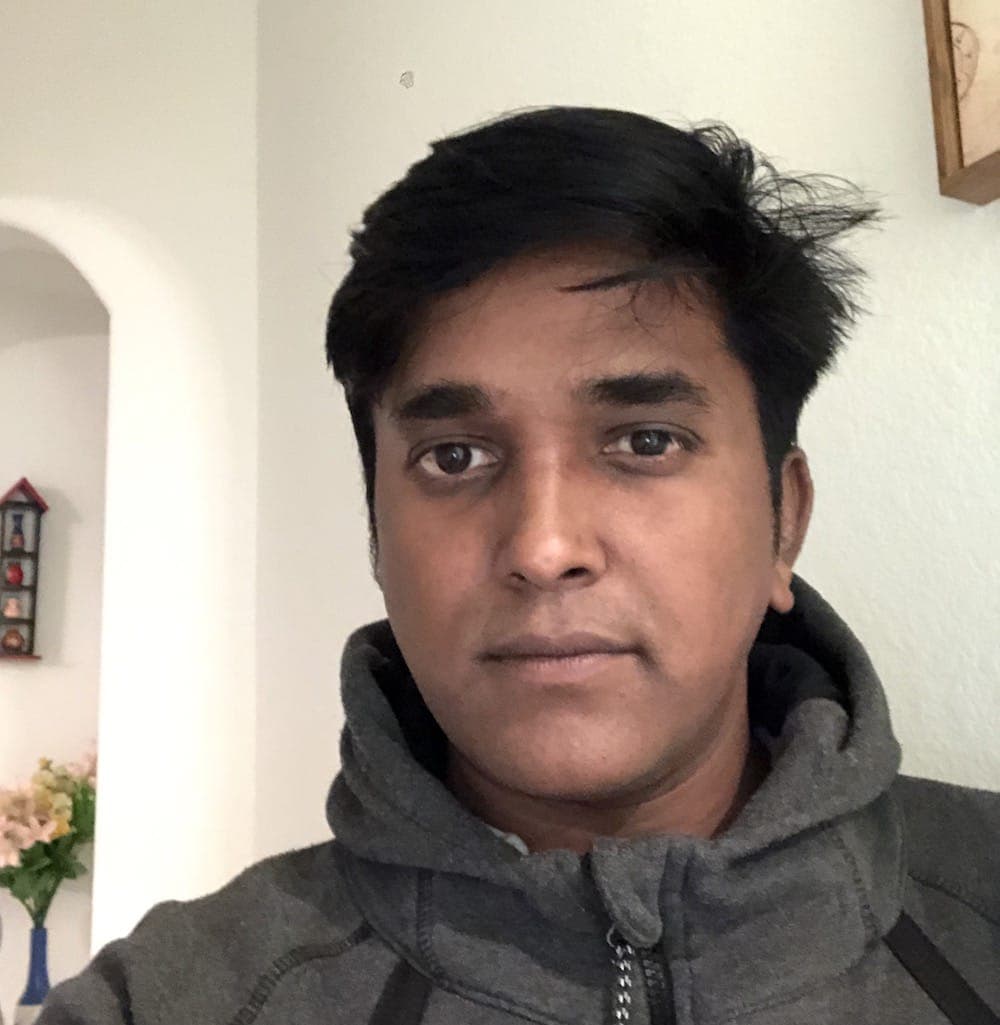
Vidal:
Okay. Well, hi. Today I have with me, Ashok, a very good friend of mine. I worked with him a long time at Walmart. So, welcome to ManagersClub, Ashok.
Ashok:
Hey. Thanks, Vidal. It’s a great pleasure to be part of your group, and thanks for giving me this opportunity. Good morning. It’s a good Sunday and we are meeting at this unprecedented time of a unique challenge in the name of COVID and it’s challenging for all the managers. I would say, this is the best timing for this interview.
What’s your background and how did you get into management?
Vidal:
Okay. Well, we’ll get into it. Yeah, again, it’s great to have you. Why don’t we start off, Ashok? Maybe tell people a little bit about your background and how you got into management.
Ashok:
Yeah, I basically started with my career as a software engineer. Why I wanted to go into software engineering is the way I see things around me. I wanted to build some applications get into an industry which makes life easy for everyone and also relates to our day to life. That is how I started.
Vidal:
Yeah.
Ashok:
About my education and where I started, I started with my education with a Bachelors degree in textile technology from A.C.Tech, Anna university. It is the world of friends and family who were into software engineering and also in the early 2000s when there was a huge boom of Indian Software companies. That made me to do some electives in Computer programming during my Bachelors and that pulled my interest towards Computers and I did my Masters in CEG, Anna University after working as a developer for a year. After my masters, I got an opportunity to work as a Software Developer in many well-known software companies and I got an opportunity to come to USA to work in Best Buy, Minneapolis as a tech lead. That was the beginning of my coming into the retail industry also. This is my educational and work background.
Ashok: Latest to add to my career is my EMBA degree from the University of Texas at Arlington. That was another turning point in life. Talking precisely about my software career I have around 15 to 16 years of experience in IT. Most of the time I wanted to be a full-stack engineer from the beginning. I didn’t want to focus my thought process in one single application or one single niche area skill. I wanted to be a full-stack engineer, and this MBA has bought me one more dimension to my career. It is about changing from a full-stack software engineer to a full-stack software professional.
Ashok:
Apart from work and career, I do enjoy being around with kids and family during the weekend. I am a part-time coach in a soccer school in Frisco. I love to cook and my latest hobby is food photography.
Ashok:
That’s where it gave me a lot of opportunity to go into that. That’s about my background, Vidal. Yeah.
How did you transition from being an IC to a manager?
Vidal:
Oh, that’s great, Ashok. Yes, I know you recently became a manager. Maybe you could tell people a little bit about how you made that transition. Then I’d also love to hear a little bit about, maybe how you feel your MBA, because a lot of people ask, “Should I get an MBA?” Have you found it useful as an engineering manager? Has it been valuable to you so far?
Ashok:
Most of my career I’ve been working on silo, on building stuff, and more of a technical role. I never thought about being in a leadership role. I think after moving to Dallas, I got an opportunity to get into that leadership role and that is how I transitioned from being a software engineer to a software manager. That’s where I started the management job.
Ashok:
The transition part, for me, was a little bit smoother. I was a tech lead and then I started building up my own team. The first process was to start in the hiring process. I got an opportunity to build a full-blown team with front-end engineers, back-end engineers, and a quality engineer as well. The leadership role gave me good freedom about that. Once I started putting in things and then delivered some of the key initiatives which I took part, the leadership took notice of it, and then that’s how I landed in this Senior Engineering manager role.
Ashok:
At the same time, I took one more initiative that is, apart from my work profile, I started doing this EMBA program, and that helped me a lot. The main thing in the EMBA program is, it’s not just about the building your character or the way you carry yourself as a leader, It’s also about the knowledge which you get. You are well-informed. Next thing, you are able to articulate your views and how you’re able to influence others. I think that’s where most of the engineers, we are not good, at least I feel that I was not good at it. Net is getting enough visibility to you, and growth-focused, and it’s career-focused. That is where I value the most in my EMBA.
Ashok:
Another thing is, it brings you a lot of diversity in your career. You see a lot of people who are from different sectors of the industries, viz., Manufacturing, Real Estate, Government, Politics. That’s where I was able to meet that cream of people. That helped me a lot. I could learn a lot of things from them, and creating the connections was good.
Ashok:
The course also offered career coaching from Linkedin Marketing professionals, etiquette, and communications specialists who helped to shape up my career. I think that was one good thing.
Ashok:
The most interesting part of my EMBA was the course for Asian business studies and an Immersion program in China for 2 weeks. Business in the Eastern part of the world is totally different with more emphasis on long term goals and human interactions, which is totally different from the Western world of seeing immediate results. Now, we have a lot of initiatives which we are doing in Walmart as a global organization and we try different applications across international markets based on our learnings from US markets. I could be able to relate that, whatever I studied in the MBA course. Being in a company with a global reach, that helped me a lot during my interactions with the Business and product from international markets.

Vidal:
That’s fantastic. I saw some of the pictures you sent when you went to China. That was really cool. I agree with you. I mean, I did an MBA also. I would say that the biggest thing I took away from it is the connections and the people that I met. Not, maybe the specific classes, but I met a lot of interesting people.
What are the biggest challenges you face?
Vidal:
Okay, moving on. I know we were talking before the call about some of the challenges that you face, I know, with the COVID-19, but in general. Doesn’t have to be specific to COVID-19, but what are some of the biggest challenges you face as an engineering leader?
Ashok:
There are many I can mention it here. One of the biggest challenges is letting it go. When you are an architect or a software engineer, you own a software piece and you know that the work you do is accountable, and then it goes into GitHub. Suddenly you became a manager and you have a feeling of losing control of it. I think that’s where the total difference is. The transition was a little bit different because there I used to feel a lot of definite quantifiable work I take pride in my work and I can showcase. Now here it’s all managing people, right? Managing people, and then attending meetings and following-up, and then giving proper directions.
Ashok:
You need to get in with a mode of delegating and let others work for you. I think that is the key difference. When I had a little bit of challenges earlier, I am becoming better at it now day by day and improving on that. I’m taking some help from my mentors and leaders as well, on how to effectively do that.
Ashok:
The second challenge is communication across upstream and downstream. I am talking about the Information flow from top-level leadership to peers and subordinates, and how do I communicate that effectively? There is this fine balance between giving all out information as well as only just giving the appropriate information. That comes by experience and proper situational analysis of the audience. I have overcome this challenge is by setting up a constant feedback loop with my leaders and talk to them on what is appropriate in those situations and take advice and try to implement in the next given opportunity.
Ashok:
Also, in that communications part comes the listening part. In most of the meetings I used to try to jump off to a conclusion now, I have learned the important value if listening. That is where I’m able to get all the viewpoints and then take proper direction across the meetings. Other biggest challenge is meetings and follow up actions and I’ve started using some of the tools, like Teams, and I used to use the Notes earlier. Notes was pretty clumsy and does not give much flexibility to set goals and deadlines. So I started putting follow up actions on Teams. I think, now the Teams is pretty seamlessly integrated into the systems since it is seamlessly working with Office 365.
Ashok:
Next, cross-functional challenges. That’s where I had a lot of challenges. You should be so polite, at the same time you should even be upfront on saying yes or no. At the same time, you need to be more of a good partner as well. I think that cross-communication, that is the cross-functional communication between the product, UX, and business is key and you have to hold your fort (the engineering team) by balancing the quality and timeliness of the deliverable.
Vidal:
I think that’s a great list you gave, of a lot of the different things that are different between, being the role of a manager. Yeah, a lot of those are really, really good challenges. Thanks for being very honest and sharing that.
Could you share with us a lesson you learned as an engineering leader?
Vidal: Do you have, maybe a specific lesson that you’ve learned as an engineering leader so far, you could share? Maybe a story.
Ashok:
Yeah. One story is about influencing your thought. That was one of the challenges. Influencing your thought and proving your integrity. I think this is mainly needed as you are in that position, right? People should believe that you can deliver. For example, you have a specific budget for execution of the project and its not just you driving the initiative but around 10 -12 people on that deliverable. That way, you need to be precise about the decisions which you make and you need to be also, creative sometimes.
People should believe that you can deliver.
Ashok:
One example I can quote is when I moved from online retail to focus area to in-store operational world. It was totally a different world for me. Still, I was able to use that experience, whatever I had in dot-com, and then influencing the people, here in the club operations side and bring in the commonalities in terms of inclub/instore operations. That provided enough arsenal to prove my integrity and move faster with enough freedom on executing my ideas. I was able to influence the people, and prove the integrity, and have the experience which I have used in my past and that brought more breadth to the product. Some of the modules which we delivered turned out to be separate products/features after two years.
Ashok:
Second lessons is, how do you take your ideas through upper management. Always going to the leadership with your proposal with a proper example. Proper example, or going with proper solutions. I think that’s what people look at because I cannot go to the leadership and say, “Hey, why can’t we do this way?” I need to be very specific. Eg., there are different networks, and how do you bring data? The creative ways of finding out how you can pull the data? Where it is residing? I think that helped me a lot. The main thing is my experience on engineering good products in the past and experience on how the data is stored, read, and governed. I think that helped me a lot in influencing. Going with proper homework. That was one influencing lesson I got.
Ashok:
Third lesson is being original and being authentic in your communication. I think that plays an important role when you’re communicating. In these brainstorming sessions where a lot of people come with different viewpoints, and the viewpoint which you are going also can be vulnerable, but you’ve got to be open. Doing what is right is the correct thing to do, instead of who is right. I think that is the main principle I follow now, even in my personal life. You have a lot of arguments and you end up having, “Who is right?” I think that’s where people are confused and that’s why you have a lot of conflicts.
Doing what is right is the correct thing to do, instead of who is right.
Ashok:
Fourth lesson is bringing visibility to your product, or project you’re part of, and then giving it back to the developers. Whenever any new idea is coming in, you’ve got to bubble up to the leadership. I’m so proud of saying to you know that being part of your time early in my career I did learn that quality. You have been doing the same thing, I know, from different levels. Either it is a vendor or a full-time, you don’t worry about that. Once you’re part of the team, you’ve got to give it back to the developers because they are the ones who are working for you. It’s all about servant leadership. I take this 1:1 s and any opportunity to appreciate and motivate my subordinates with the value they provide to the team and I owe you for that exhaustive 1:1 list you had in your ManagersClub site. I strongly believe in that saying people leave a company, not because of the company but the managers.
What is your approach to hiring?
Vidal:
Wow. That’s a good list of stuff you shared. I like how you said, you have to come very prepared, to leadership. I love what you said too, about, it’s not like who’s right, but what’s the right thing? Just focusing on the right thing. These are great. Well, this is, maybe a good segue into my next question, since you talked about people leaving managers, for example. What is your approach to hiring and recruiting?
Ashok:
Hiring and recruiting, it’s basically sticking to the hiring principles. So far I’ve built two or three teams here, for the past two years. The team has been successful and also were rewarded rightly for being one of the best teams in terms of achieving the business goals and aligning with the organizational strategy. The team which we built, was passionate with a curious attitude towards the goals and deliverables. That’s how I look at building teams and making them successful.
Ashok:
Saying that I look at a candidate who’s having a complete package as a software engineer, not only on one niche skill. You can say, for example, I’m recruiting a back-end engineer. I would not only test his Java skills, but I would also test his SQL skills. I would also test the candidate’s broad vision of seeing the global picture of the system including the aspects of interactions with UI too. Also, I look at what are the other things outside of his work he has contributed to the software community.
Ashok:
First thing I ask for him/her is, “What are the open source community you’re working with? What is your GitHub?” I get good information about the person who I’m interviewing. I even do research on their Linkedin profiles to know more about their profile and kind of professional circle they are into. I like doing homework about a candidate before they come in for an interview since these are the interview sessions where you are putting a face of your organization.
Ashok:
The second thing is, I focus on 50% of technical and 50% around soft skills. You might have known about the STAR method. That’s what I also used to follow. Another thing I look for is curiosity, originality, and the ability to be upbeat with the latest technology. I go for a system design question and break it into directed interview questions at specific intervals based on the time-box provided.
Ashok:
There is always a saying, “You have to hire a person who is smarter than you.” I feel it’s true because you learn a lot of things from them. As you grow, the generation which is coming in, they come up with a lot of new technology. We need to nurture. At the same time, you need to check the company culture fit. I think that is more important. I would love to have a candidate immediately jump on a problem and start coding. That’s one thing I look at it, never giving up in the situations. Yeah, these are the things which I see for a candidate.
What’s your advice for managers who are just starting out?
Vidal:
Okay. Wow, that’s a good list. I know you’ve recently transitioned to be a manager. What would be your advice for managers who are just starting out?
Ashok:
Yeah. I would say, still, I’m new. One thing I can tell is, going towards a manager job, a lot of people have a bit of reluctancy towards that role. There is nothing afraid to be taking that position. All through years, you would have been in shadows and one day you’ve got to lead.
Ashok:
Key here for new managers is to work with self-compassion, authenticity, integrity, and gratitude. Of all the qualities the least discussed is gratitude because, but you never know when you end up in a situation with a lot of opportunities to showcase your talent and grow up the career ladder.
Ashok:
They always say, trust and verify. I think that’s more important point. You need to trust what is the important and then upfront say them that, “This is not going to work.” I think that’s where lot of managers miss it. They just keep listening and then there is no action to it. This lesson, I’ve learned. You need to be honest on giving and receving the feedback I think that’s the key for all the managers.
What’s your workday like and how do you manage your time, emails, etc.?
Vidal:
That’s great. I mean, I’m really impressed with your answer being, especially you just started out. You gave a very, very complete answer to this. Tell me a little bit, what is your workday like, Ashok? How do you manage your time, calendar, emails? All the things that managers need to do.
Ashok:
Generally, I’m not much of an organized person. Once stepping into the Manager’s role, you got to be organized and manage things effectively. I believe the MBA course, made me better in organizing my time schedule and calendar since I had to balance three things at once, work, education, and family. I think that taught me a lot.
Ashok:
Planning ahead is key. I do plan at least three to four days of work. The weekend, Sunday, I spend one or two hours, I take time and make sure that I prepare for important meetings Next is, I usually use my calendar as blocking times. That’s where I put some color-coding on that, it’s critical or not. I block that time, so that way I don’t get any of the disturbances, and not distracted.
Ashok:
Second thing is, I started using most of the tracking tools like Teams or Trello. Trello, I use it mostly for my personal thing wherein I track the things so that I can share it with my family, friends, and other people. For my professional tracker and followups, I use Teams.
Ashok:
This is the schedule I follow. Morning, most of the time it’s all meetings. I make sure that I don’t attend all of the meetings. I usually join the scrum meetings, so that’s 15 minutes and that gives you who is working on what and I can judge the flow of the sprint deliverables.
Ashok:
Next is, I join the sprint planning meeting because that is important, which is going to come. That way I spend only two hours on that and then half an hour on this. Other meetings, I leave it to the tech leads so they can take decisions. If there are any triage meetings or the UAT support meetings, I usually join because that involves the business partners. Then the retrospective. I think these are the four meetings which I join for the team. Apart from that, I take time on some of the training.
Ashok:
Another important thing as an engineering manager is to reduce the tech debt and I usually spend 30 to 40 minutes on reducing the tech debt backlog. Weekly we meet as a team with members from my Manager which are part of his/her portfolio to bring cross to collaborate on architecture, lessons learned, and technical design decisions.
Ashok:
Here, we don’t have the flexibility of no-meeting days or something like that. Most of the days are filled with meetings and I need to sneak in some of the time for my other work also. I am trying to improvise on managing all these stuff together.
Vidal:
Wow. Okay. Yes, you have a lot on your plate. I can tell.
Ashok:
Yeah, yeah. I know. You remember, right? We had these exceptions, the Tech debt. You remember how we worked for that, around 60 to 70%, we reduced the exceptions on our mobile platform, right?
Vidal:
Yes.
What’s a personal habit that contributes to your success?
Vidal:
I remember. I remember. Okay. What would you say is a personal habit that contributes to your success?
Ashok:
My personal habit is hard work, being authentic. I think that’s the most important thing, being original. Then sometimes being original puts you into a lot of trouble, but in the long-run, I think that’s more important for you. You need to be really, really honest on what you do and how do you convey. You always have the same face. You talk in meetings and then in a workplace, you need to carry that. I think that’s more important.
Ashok:
Another personal habit is to be with a sense of gratitude in my day-to-day interactions. When you talk to somebody or if they are helping you, you have to thank them back. I think that’s the most important thing in your personal as well as professional career. You never know when you get the opportunity. I’m a firm believer in karma. You know, right? Another thing is, there is something called as aura which you create. Being a software person, you need to maintain that professional aura. In personal life, that’s how you maintain the relationship with people, that energy. The energy which flows, that’s more important.
Ashok:
Whenever you are original, I think that’s where that energy, it comes up automatically. I’m being pretty philosophical in this case, but that’s how it has worked for me throughout my career or in my personal life. Yeah, you should be willing. Willingness and openness to help people. That’s where I got lot of help when I was in difficult situations. The last two years were pretty hard for me, both in personal as well as in professional life, but I was able to over come using my connections which I made earlier, which helped me lot in putting me in this position.
Share an internet resource or tool that you can’t live without.
Vidal:
Yeah, I think that’s great. I remember, yeah, you’re super helpful. You have that aura you’re talking about. I totally remember that from working with you. It’s awesome and I’m glad it’s worked well for you. You talked about some tools earlier, and I love tools also. Is there a particular tool or resource you find super useful as an engineering leader that you would recommend?
Ashok:
Mostly I’m using LinkedIn now, for most of the stuff. I read a lot of stuff which is coming in, good quality stuff. I go into Medium for some of the technical articles, and their articles are pretty good, the curation which they do. The tools which I can’t live with, I would may be coin it differently as apps I can’t live without. I use WhatsApp, YouTube more. For time tracking and professional stuff, I mostly use the Teams now. Teams, I’ve being a fan of it now. It has seamless integration.
Vidal:
So, Microsoft Teams app.
Ashok:
Yeah, Microsoft Teams. Yeah.
If you could recommend one book to managers, what would it be and why?
Vidal:
Okay. Sounds good. If you could recommend one book to engineering managers, what would it be and why?
Ashok:
This is my favorite actually, “Five Dysfunctions of a Team: A Leadership Fable”. I think it’s a must-read for everyone. It’s kind of a mantra you chant all day Trust, Conflict, Commitment, Accountability, and Results. The basic foundation is trust. Unless you have trust with your subordinates, you cannot move any project. The common interest is being there.
Unless you have trust with your subordinates, you cannot move any project.
Ashok:
The fear of conflict. I think this is more important. The fear of conflict is, you always have this predefined notion that, “Okay, if I’m going to tell this, somebody’s going to say no.” Then that feeling turns back to you and then thinks, “Okay, he said no to my idea,” so that’s where the gap starts, right? The first fight starts. You need to have arguments upfront and then make sure you write it off. You need to be open and then you need to take opportunities and the feedback. That’s where you can grow.
Ashok:
Next is the commitment. I think all the team members should be committed. That’s the job, driving a team to be committed towards an organizational goal is the most important thing for any manager. That’s where you need to enforce on bringing in the team members, and accountability. Accountability is one area where I’m focusing more in recent past. Improved communication at right time , adhering to process and striving for consistency leads to a committed team with common goals.
Ashok:
Results, right? Listening to the results. I think that’s where, whenever you do an engineering project or something, how is it resulting in your career or for the team? That visibility, you need to give, and give attention to the results. Say for example, I put this code on production what was the nature of the code before that and after that? How it helped you? I think, quantifying the single line of code towards your business objectives or towards your improvement of your engineering quality and the habit of practicing this daily makes a lot of difference.
Ashok:
I think this book has a lot of things other than what I’ve shared.
Vidal:
That’s a great book. Thanks for recommending that and summarizing a lot of the key stuff in the book.
Ashok:
Yeah. One more book I want to highlight is Hacking Growth: How Today’s Fastest-Growing Companies Drive Breakout Success by Sean Ellis and Morgan Brown.
What is your approach to mentoring and coaching members of your team?
Vidal:
I have one last question. What is your approach to coaching members of your team, maybe with regards to career development or moving forward? What do you do there? How do you approach that?
Ashok:
Yeah. So, coaching and mentorship starts with a specific level of setting expectations and goals, right? As a coach you need to be in that journey. Whatever job they have been put into, so you need to justify. Then at the same time giving them specific examples of why you feel like that and how you want to take it up. I think that’s where the conversation starts. When you start with the conversation of the coaching, you need to listen to them, what exactly they want to do. Now I’m able to understand his side of argument. “Okay, this is boring,” or what he wants to do. I think, once you get that tone of what he wants or she wants, I think that’s where the first point of coaching is.
Ashok:
Next is setting up the goals. For the next three or six months, what is your long-term goal? You ask them, you listen to them, and what kind of homework they have done it. Then tell them, “This is what …” Then we need to relate with our experience. That’s where the coaching comes in, because the individual skills totally differ, because I am now, 15 years experience. I might not be good at coding now and my focus area would have shifted towards the bigger picture, but he might be very fast in coding. So, we just need to balance that. I think that’s where coaching and mentoring comes in.
Ashok:
I give them a specific plan. The one-on-ones I say, “Okay, this week you need to … Past two weeks you started with the tech debt thing. What were the results?” That’s how I go with coaching and mentoring. Yeah. I have seen a lot of good results on that. Next is empowering them. Testing them and trying to make them feel more proud of what they are doing.
Where can we go to learn more about you?
Vidal:
Thanks, Ashok. It was a very complete answer. You’ve been super generous of your time. Really, thank you so much for coming on the ManagersClub and sharing with everyone. Where can people go, to find out more about you or reach out to you if they have questions?
Ashok:
I’m on LinkedIn and that’s where you find me about my career and professional experiences. Then I have a GitHub, which has some useful projects on Java, Android, Python, and R. I am in medium which has few blogs and due to my work i am not contributing much nowadays , but still there are few good reads now. I’m now into YouTube more, wherein it’s a new hobby on food photography and getting some good traffic on that.
https://www.linkedin.com/in/ashokramaraj/
https://github.com/aramaraj
https://medium.com/@ashok.ramara
https://www.facebook.com/ashok.ramaraj
https://www.youtube.com/eashwarskitchen
Vidal:
That sounds great. I’ll provide links to that in the interview. Again, thank you again, so much. It was great to have you here, my friend. I’ll talk with you soon.
Ashok:
Yeah. Thanks, Vidal. Yeah, thanks for this nice opportunity. It’s good to be a part of this ManagersClub, and I’ve been following your site. Also, you won’t know, a lot of people in Sam’s Club have bookmarks to your ManagersClub. You’re doing an awesome job for the manager’s community.
Vidal:
Thank you. Thank you.

